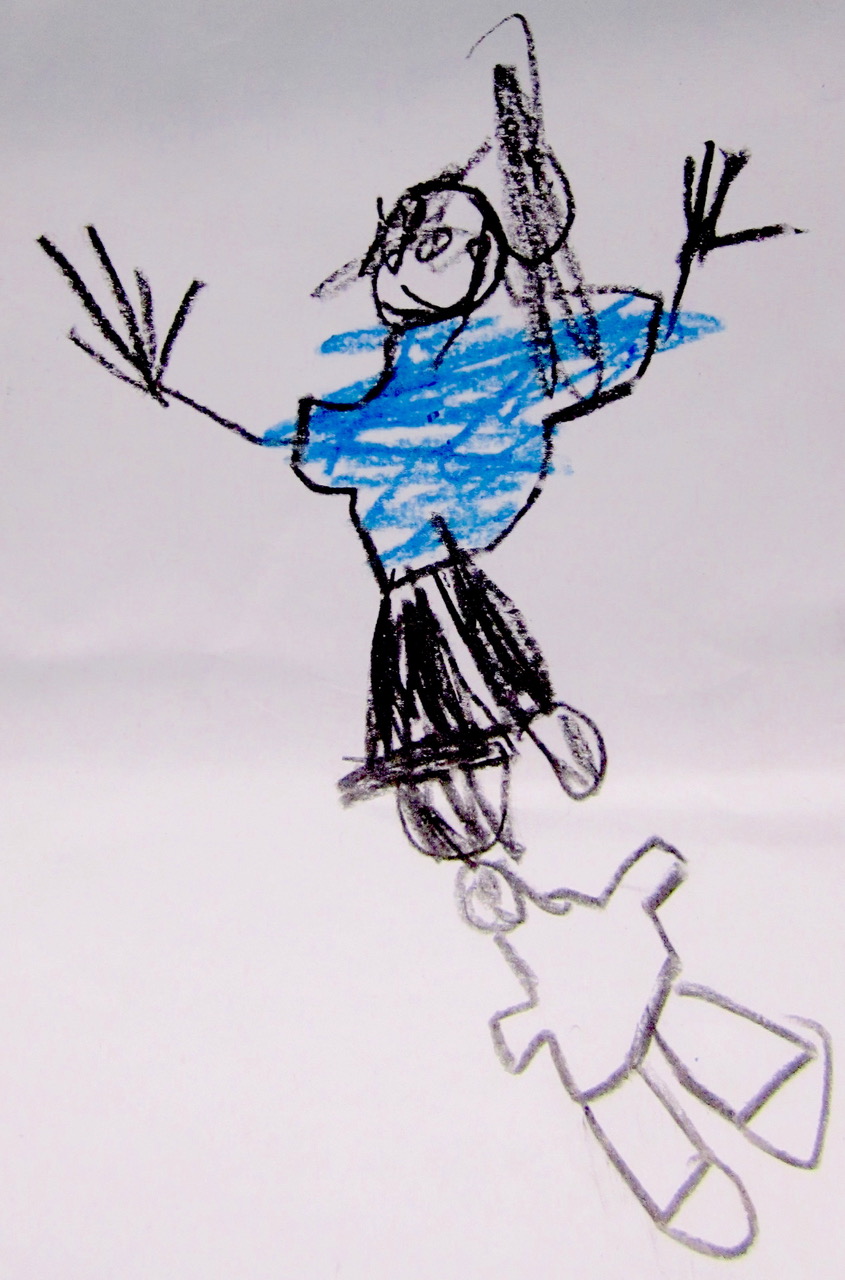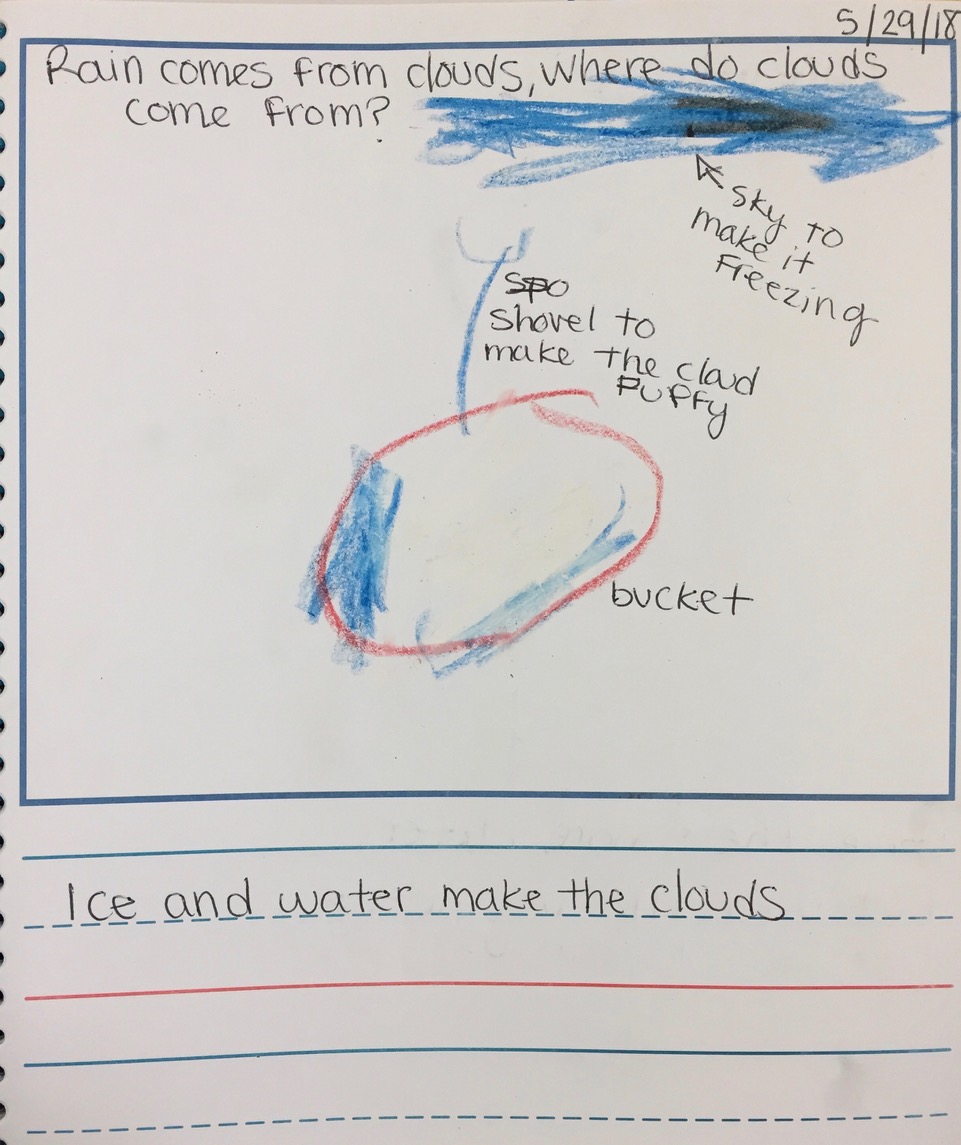The Early Years
Learning With Models
Young children create models to share what they know about or how something works. Models may be arm gestures children use to show “how big” something is (or “so tiny” with fingers), drawings to represent themselves and family members, or models of spaceships and towers made with blocks. Children may create models to document their observations during experiences such as holding an earthworm or watching a tower crane on a construction site. Children can explain how their play dough model of an earthworm is not exactly what a worm is like (“It’s too short. Worms are stretched out longer”), and what their model of a crane needs to “be real.” In sharing their images or physical replicas, children share their understandings and highlight the parts that seem important to them, helping educators understand what children know and think.
Educators can discuss these models with students to determine if they express what is intended (helping children think about and test ideas about phenomena), or if it raises and answers any questions (“How do worms move?”). In “Using Models Scientifically” the authors present a table of reflective questions for engagement in scientific modeling (Forbes et al. 2015, p. 44). Asking preschoolers these questions can be appropriate as they consider that drawings and sculptures are models of an object or for explaining ideas. For example, when a four-year old boy draws a picture representing himself with his shadow, he may not connect the shadow and self at his feet or may draw the shadow head touching his feet. Reflective questions can help this child evaluate and revise to create a model that accurately represents shadow formation. Considering the reflective questions can help children really think about their representation. Revise them for preschoolers: “Does your model show what happens?” and “Tell me why you think that.” Additional experiences observing shadows help children consider the reflective questions. With further exploration children may add to their model the light source that created the shadow.
Other student reflective questions relate to the media literacy concept of understanding how others might interpret a message. Many adults have had the experience of misinterpreting a child’s drawing—seeing a dog when the child drew a horse, or a tree that is a child’s flower. We can ask, “Who will learn from your model?” and “Will other people see the same things you do when they look at your model?” Ask these questions in a small group or one-on-one so children have time to think and respond, and have support for making changes if they want to.
Models allow scientists to summarize and depict the known features of a physical system and predict outcomes using these depictions (NRC 2012, p. 110; Michaels, Shouse, and Schweingruber 2008, p. 110). Consider if some of your children are ready to use models for more than simple representations of an experience, observation, or idea, and begin to use models as tools to explain how or why things happen (Forbes et al. 2015).

Using Models to Learn About Rain
OBJECTIVE
To introduce children to the concept of making and using models to represent their observations of natural phenomena.
- Consider what natural phenomena, objects, or living organisms children are currently investigating and representing through making models. Hold conversations about their models using reflective questions (Forbes et al. 2015, p. 44) to help students consider if their models represent both what they observe and their ideas about it. Referring to children’s models in discussions may help them develop further understanding of the phenomena, such as rain.
- Rainfall is an interesting event for children to investigate and document. Provide time over weeks and months for children to observe clouds, walk in the rain, splash in puddles, and create artwork about these experiences.
- Resist the temptation to explain the water cycle, including evaporation and condensation, through a demonstration using teacher-designed models. See APPENDIX E – Progressions Within the Next Generation Science Standards of disciplinary core ideas to see at what age children are likely to fully understand particular concepts that they experience, such as evaporation. In the upper elementary years, children have the experience and conceptual ability to understand that small particles of water rise into the atmosphere, condense, and fall as precipitation (NGSS 5-PS1-1 Matter and Its Interactions and MS-ESS2-4 Earth’s Systems.)
- Provide additional experiences for children to observe “where water is found on Earth and that it can be solid or liquid” (2-ESS2-3 Earth’s Systems), such as going on a walking field trip to a nearby natural body of water, reading books about the local geography with photos and maps of the local area, freezing and melting water, and observing and documenting precipitation and other weather data. With their weather observations, children can “Use and share observations of local weather conditions to describe patterns over time” (K-ESS2-1 Earth’s Systems) (see Resources).
- Weather observations over time become the basis for additional modeling, building on artwork of single events, such as a cloudy day. Ask children, “What questions do we have about what happens when it rains?” and “What kind of model can we make that will help us answer our questions and explain our ideas to others?” Drawing on a large shared sheet of bulletin board paper with explanatory dictation and writing brings all ideas together in one model. Children may draw from memory or refer to previously collected data—artwork and data measurements—to illustrate rain drops; where rain water flows; clouds before, during, and after rainstorms; and other observations.
Help children reflect on and revise the model through discussions where new questions are raised and after they share the model with others to explain their ideas about what happens when it rains. Refer to it when it rains and have children test their ideas of the phenomena. Does their model explain what they are observing or is there something to revise?
- Art media such as pencils, crayons, colored pencils, and so on

Peggy Ashbrook (scienceissimple@yahoo.com) is the author of Science Learning in the Early Years: Activities in PreK–2 and teaches preschool science in Alexandria, Virginia.
Earth & Space Science Engineering Pedagogy Early Childhood Elementary


